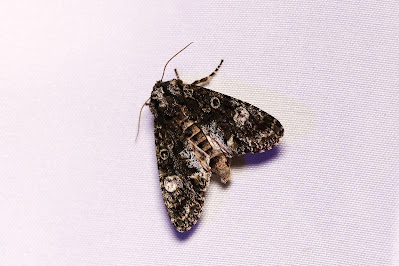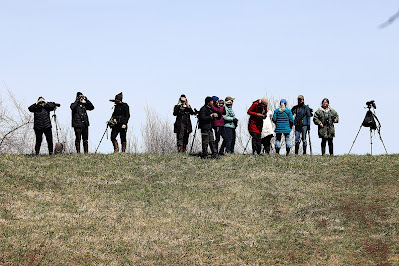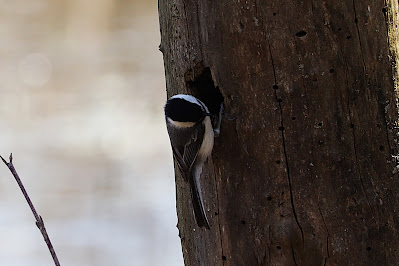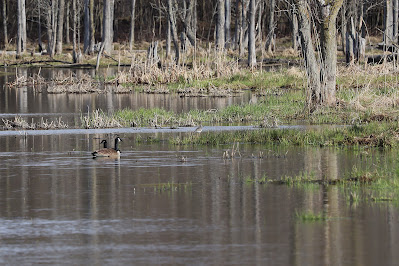Moth Night in the Park!
We had a good start to mothing this spring! We carried the moth equipment to the woodlot at the end of our street. The first species we found after setting up was the caterpillar of a Giant Leopard Moth. It was nibbling on young leaves that were emerging from the tree buds.
‘
Video: The caterpillar was very active after it fed!
A Grote's Sallow was the first species to land on the sheet which we hung on a rope strung between two trees. There was a bit of a breeze and we learned that we should have found 2 trees a little closer together to reduce flapping of the sheet.
During breezier conditions, moths were finding other things to land on including our hats, pants and jackets! We all took turns being the "model" while others took photos! We found 14 species and look forward to many more moth nights this year!
Small Engrailed
Intractable Quaker
Double-lined Gray
Distinct Quaker
Canadian Melanolophia Moth
Intent Zale Moth - If you ignore the red tarp, the moth chose a spotted log that closely resembled the patterning on the wing!
Small Engrailed
Curved-tooth Geometer Moth
I believe this is a White Sac Spider. Lots of critters depend upon the leaf layer on the forest floor for survival!


























































